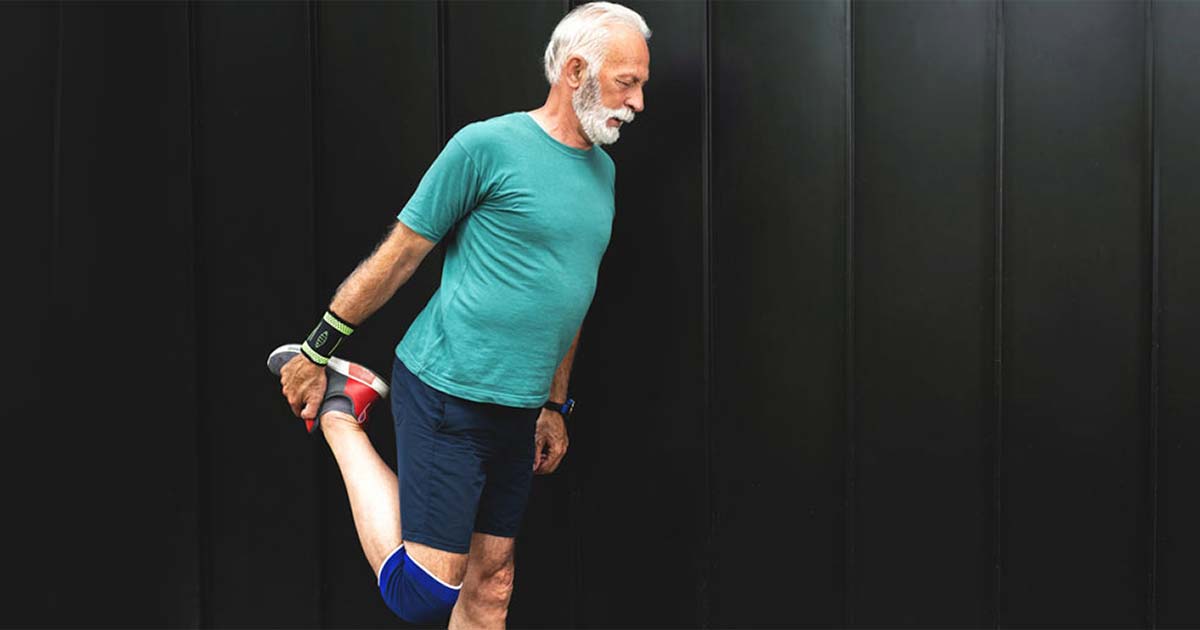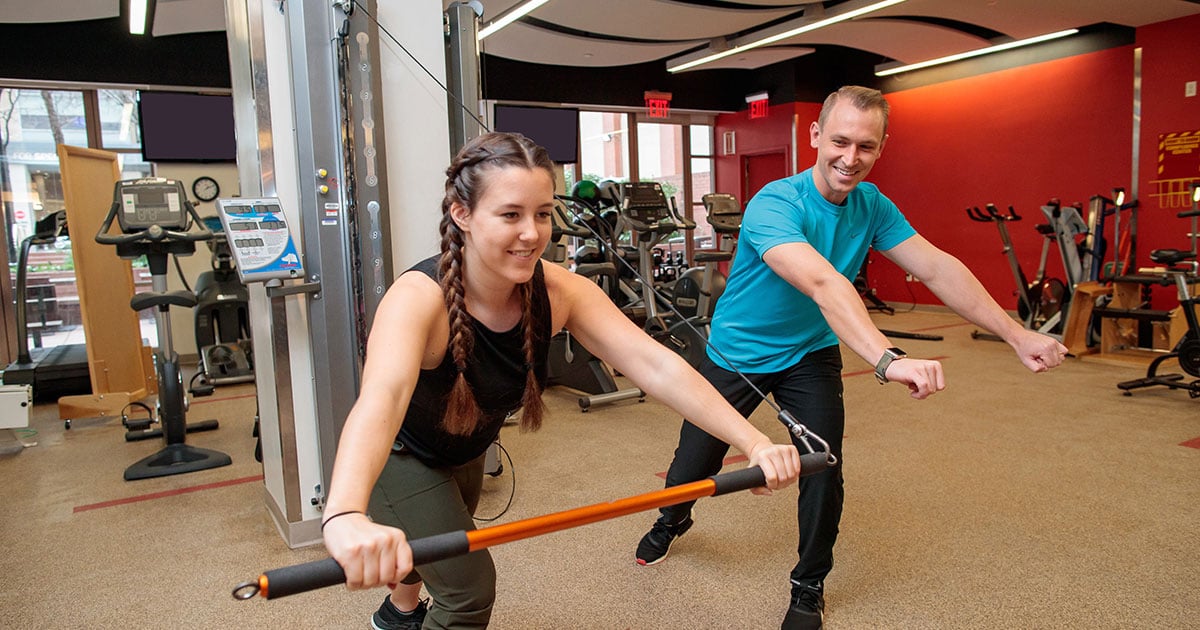
Advice to improve your movement, fitness, and overall health from the #1 in orthopedics in the U.S.
Kinesiology Tape: What It Is and How to Use It
This flexible tape is often seen on professional athletes. Is it for you?
Advice to improve your movement, fitness, and overall health from the #1 in orthopedics in the U.S.

John Castro, PT, DPT, OCS, MTC, Clinical Supervisor at HSS Westchester Rehabilitation and Performance, is a certified orthopedic specialist and physical therapist who has been applying the therapeutic tape for nearly three decades. In this Q&A, he sorts through the hype.
What is kinesiology tape and what is it used for?
Kinesiology tape is a thin, flexible tape that was developed to aid muscle movement and enhance athletic performance. It is often used to relieve pain, reduce swelling and inflammation and provide support to joints and muscles.
The elasticity, or stretchiness, of kinesiology tape allows for movement. This makes it different from the more rigid rehabilitation tape or support adhesives that have no stretch to them. Those are used to keep muscles and joints from moving and provide support after a sports-related injury, and for people who have conditions that make it difficult to activate muscles or control muscle contraction.
A 2021 survey published in the International Journal of Sports Physical Therapy found that most professionals use kinesiology tape for post-injury treatment, to help lessen pain and to stimulate the muscles into action.
Is taping a new approach?
Taping is not new. Support adhesives have been used since the Olympic games in the 1960s. Athletes like weightlifters, volleyball players, divers and rock climbers have also long used them.
Kinesio Tape® was introduced in 2003 as a neuromuscular tape intended to help improve muscle contraction. The quality of this tape was supposed to be physiologically similar to the skin. It became a trend in the United States in 2008 after an article in The New York Times featured an Olympic beach-volleyball champion wearing the tape on her shoulder. Over time, many different brands introduced similar versions, including KT Tape®, RockTape®, K-Tape® and dozens of others.
Who benefits from using kinesiology tape?
One of the main reasons we use kinesiology tape is to help people with muscle stimulation after an injury. The thin, stretchy tape imitates the skin’s elasticity, so it feels very natural. When you apply the tape, the skin sends signals to the nerves to activate the muscles. When the muscles receive that information, they respond to the stimulation and contract. Muscle contractions produce movement, sustain body posture and position and help stabilize joints.
In addition, kinesiology tape is used to relieve pain from inflammation and lymphedema. It’s applied in a way that pulls the skin upward, creating a space under the skin that improves the lymphatic flow in that area. It may also help prevent arthritic inflammation from flaring, but there is little evidence to support that and it is even less beneficial if the condition is chronic or mobility is a problem.
Is there published research that supports using kinesiology tape?
Most of the studies that have been done are not conclusive. Research outcomes may vary depending on the material of tape used. Different brands use different materials, so studies can generate a high degree of inconsistencies.
Another problem is that most blinded studies are designed to randomize people into groups in which every person receives the same taping technique. However, different application techniques are needed for each patient, body part and condition. Knee pain, for instance, could be caused by issues with the tendon, the meniscus, the fat pad, the ligament or a combination of these. For best results, we must tailor the taping technique for the specific problem causing the pain.
There are some studies that have shown good outcomes when the correct taping technique is applied on the right patient. These included patients with patellofemoral pain syndrome, knee osteoarthritis and lymphedema after mastectomy.
Are there misconceptions people should be aware of?
Some people will benefit no matter what kind of tape we use or how we use it. Patients should feel more than 30% better when I apply kinesiology tape. That’s when I know it’s helping. If they only feel 5% or 10% better, then it’s probably a placebo effect.
Additionally, some people think the various colors of kinesiology tape have specific properties and benefits, but they do not. Color choice is simply a matter of personal preference.
The biggest misconception, however, involves claims that applying kinesiology tape for knee or shoulder instability can provide support similar to a brace, but that is not necessarily true. In my opinion, the material is too soft, so it doesn’t create enough stability. There is no conclusive research to support its use in this area. People may want to ask their provider about using the more rigid support adhesives for these particular issues instead.
Are there any downsides to using kinesiology tape?
The major downside is skin irritation. The tape may create blisters and skin damage, so it should not be put on open wounds or used on people who have very frail skin, like older patients.
The tape is supposed to be hypoallergenic, but between 5% and 15% of users are allergic to the material. A good way to know if you are allergic is to apply a piece of the tape on the forearm and wait at least one hour for a reaction. If you feel itchy under or around the skin covered by the tape, remove the tape right away and do not use it.
Kinesiology tape can stay in place for several days and up to three weeks. To remove the tape with minimal skin irritation, I recommend patients soak it when bathing, apply some oil on the area, hold the skin and pull the tape off slowly and gently.
Can people use it at home or should it only be applied by trained professionals?
People can try applying kinesiology tape themselves, but it won’t be as effective. There are instructional videos online, and some practitioners may be willing to teach you how to apply the tape so you can continue to do it yourself at home. But you will have a better result if an experienced or certified practitioner applies it with good technique. Taping is not one-size-fits-all. It requires a certain clinical background and experience to understand how best to apply the tape for each patient’s anatomy and condition.
Published 9/19/2023


